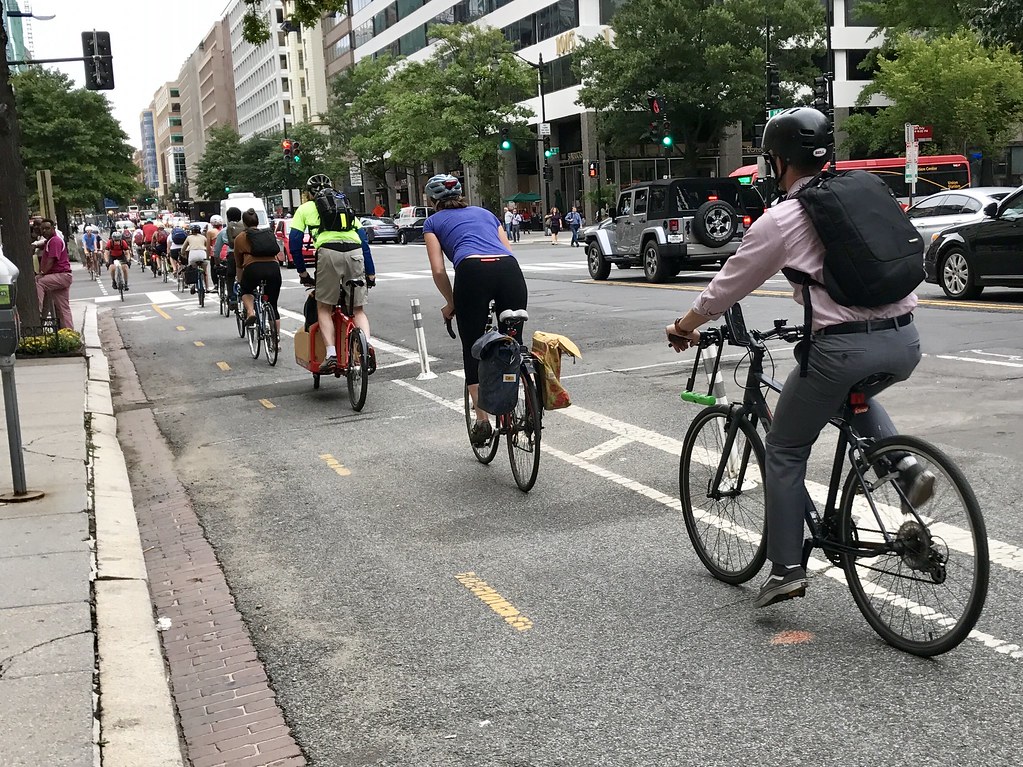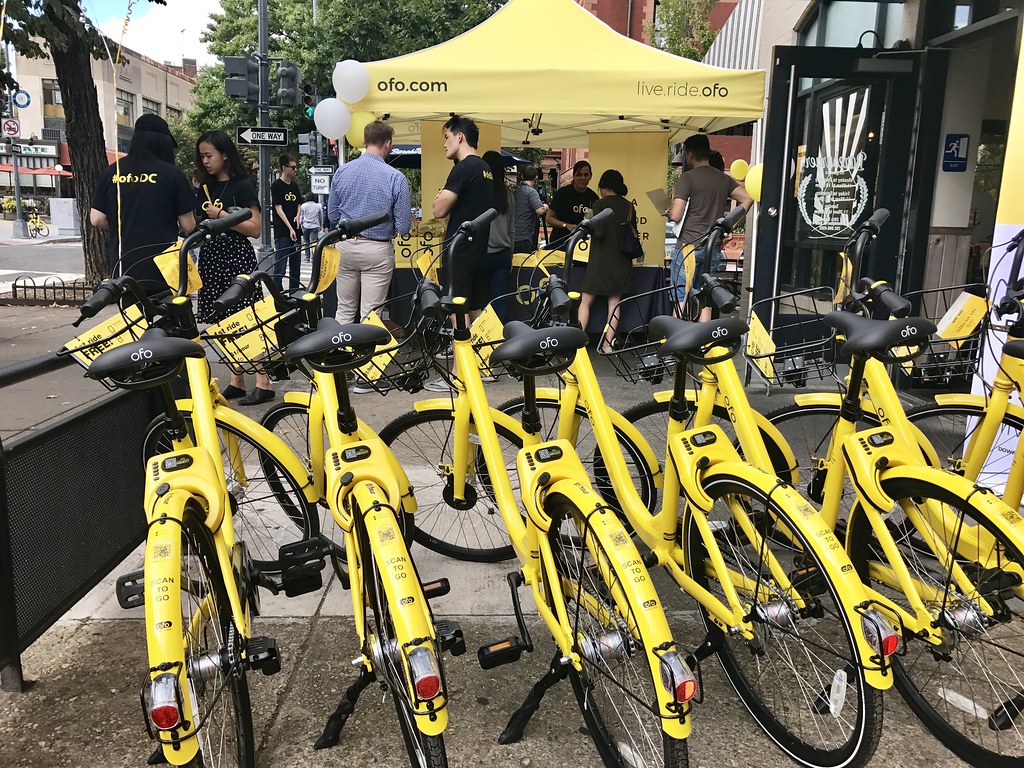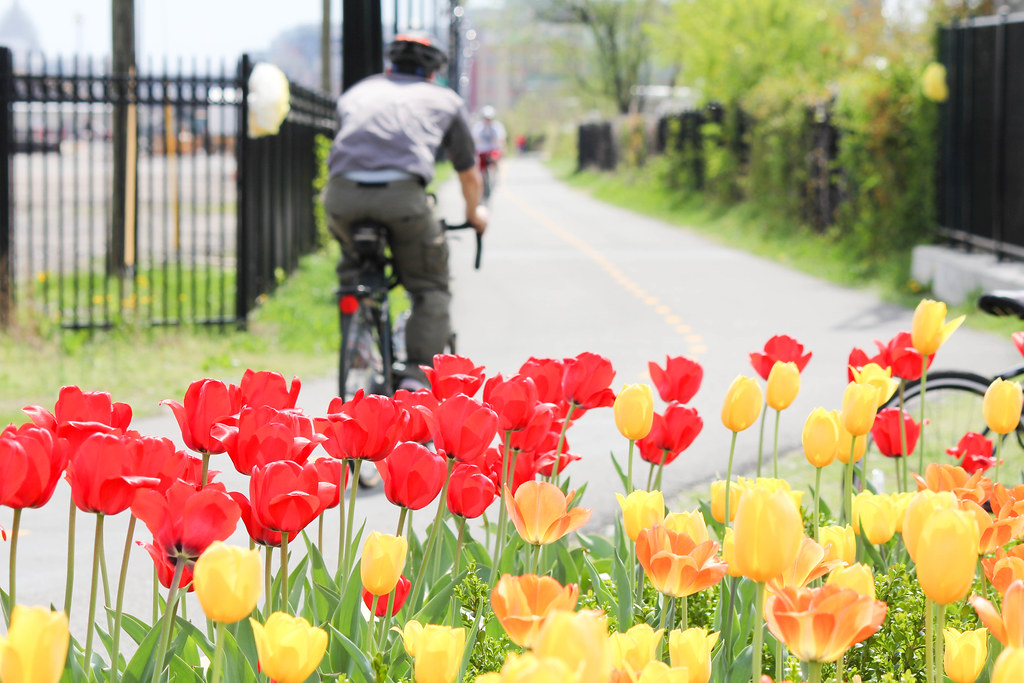I fell in love with my new bike on a rainy day in Georgetown.
After playing soccer with friends, I went for coffee, watching the drizzle turn into a downpour as I sat in the window. Locked up to a parking sign outside, my Specialized Sirrus was marinated in rain.
By the time I left, it was a cold monsoon. 38 degrees and pouring. The weather was so bad that I contemplated putting my bike on a bus for the ride home.
But that seemed complicated. I could be home in ten minutes if I biked. It was all downhill from Georgetown back to my Logan Circle apartment.
I wiped the water off my seat and pedaled away.
After going over the little rise near Book Hill, I rolled down steep R St, approaching a stop sign. Would my bike stop on the slippery street?
The Sirrus stopped with aplomb, its disc brakes working effortlessly. A gentle squeeze on the levers was all it took. On my old bike, with its v-brakes, there would’ve been some sliding and squeaking.
That’s the moment I fell in love with the Sirrus. I was cold and wet but felt secure on two wheels.
Bike manufacturers like to talk features. The bike has Shimano shift levers, an aluminum frame, rack mounts.
But what matters to buyers are benefits. Will this bike get me home on a miserable day?
Yes. Flat bars with disc brakes make it easy to stop and start on busy city streets. Lots of gears make quick work of hills. Wide tires roll over DC’s potholes.
Buying a bike is personal. What’s right for me may not be right for you. For my style of riding (recreational, urban), it’s perfect. As I wrote earlier, as soon as I got on the Sirrus, it felt right.
Additional Observations
- The bike might be slightly too big for me. It’s a medium, while my old Sirrus was a small. The old Sirrus was more of a road bike; this is closer to a mountain bike. Also, I could cram my old bike into the backseat of a sedan while the new bike definitely does not fit.
- After buying the bike, I realized I basically bought the same bike as my friend Mr. T in DC! After long admiring his immaculate black Cannondale Bad Boy to the point where he joked that he was going to leave it me in his will, I pretty much purchased the Specialized version of his bike.
- I put front and rear lights on the bike so that I could be more easily seen. I also purchased a cheap frame bag for my Kryptonite lock and other essentials.
- Living downtown without a car, I’m on a bike just about every day. On the weekdays, I use Capital Bikeshare. I use my Sirrus for longer rides and on the weekends.
- Once you have one new bike, you want more! While in Florida over Xmas break, I got my Dahon folding bike fixed. My bike friends think two bikes is not enough. One day, I’d love to have a better foldy (like a Brompton) and I wish I had stuff to haul around so I could get a Tern GSD. I tested and loved this compact utility e-bike.






